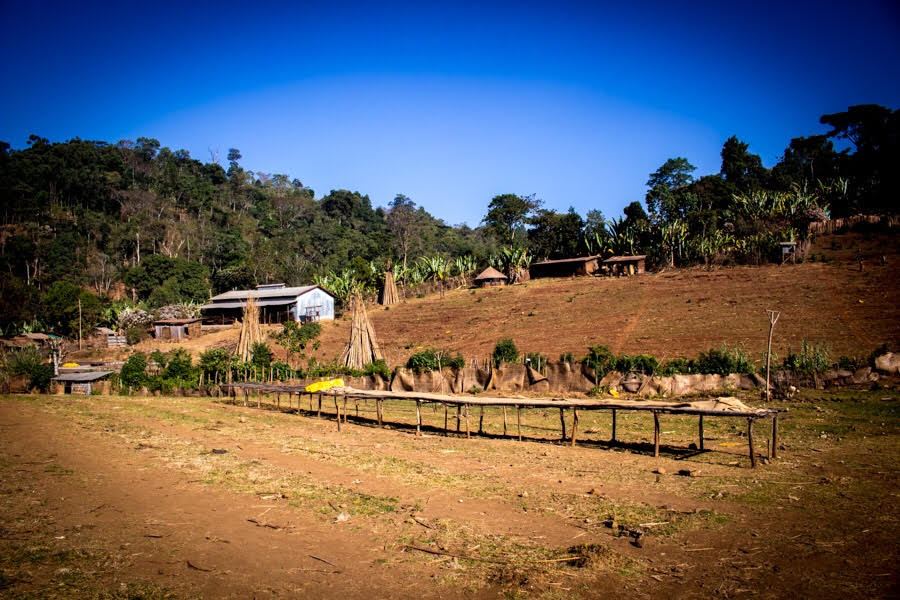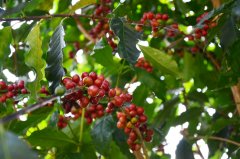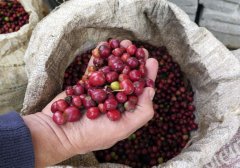The right way to drink Kebel Aricha Erika Erica
The correct way of drinking Yega Xuefei Kebel Aricha

Planting land
Country: Ethiopia Ethiopia
Manor: Aricha
Grade: Grade1
Altitude: 1950-2100 m
Aroma: strawberry, lover fruit, orange, earthy mango
Flavor: berries, cocoa, grapefruit, strong grease, Hawthorn, mango, pineapple
One of Ethiopia's most precious coffees, Yirgacheffe, is grown in the lush highlands of the misty valley. This special variety is naturally tanned, which means that the beans are dried, not after the fruit is removed. Ethiopian Yirgacheffe shows characteristic brightness in the cup test because of the unique red hue in the soil due to the characteristics of clay. Its subtle red fruit aromas suggest citrus, berries, peaches and pineapples.
This professional area in southern Ethiopia comes from the small town of Aricha Keble in the Yirgacheffe region. Located on the eastern slope of the dense green mountains of the misty valley at 1950 meters above sea level, Yirgacheffe is an excellent coffee growing area with a farm covering an area of 1400 hectares, and the Aricha Keble area employs a 2-hectare coffee factory dedicated to coffee picker cup testing. This natural coffee basks in the sun on a high scaffolding, and over time, the shell and mucous membrane of the cherries dry in the sun. This process can be taken with this unique coffee. As hand-brewed or enjoy espresso, this coffee highlights the dessert of strawberries, chocolate and roasted hazelnuts, combined with rich creamy texture and citrus acidity.
Although washing and half-sun methods are used today, coffee was originally handled differently; it does not require the use of a machine that has just been produced in the past few centuries. As a result, this sun-drying process has been used for at least the past nine centuries after the first discovery of coffee in Ethiopia.
Except for any process that involves peeling and crushing, the drying process dries the entire coffee cherry in the sun, allowing the coffee beans to absorb the fruit aroma and all the flavors of the mucus and amniotic layer. When the coffee is finished in the sun, its moisture content will be reduced to 10-12%. This is a major manual method, using very few (if any) machines at all times, which means that the process of tanning sometimes brings more risk because there is more room for human error.
After drying and shelling, you can take it out of the cherry and send it for delivery. The main problem with using this method is that the flavor of all coffee beans is usually uneven, which means that strict tasting and testing must be carried out to ensure that the coffee is evenly seasoned. Usually, beans from the same batch must be separated from each other so that only higher-quality beans maintain higher-quality batches.
Sun treatment (or "natural treatment") can also be done in different ways through the so-called "pasa" technology. Coffee cherries are placed on branches to further ripen and dry there, rather than requiring the use of high scaffolding to dry cherries. This produces a slightly different flavor, but still especially dry processed coffee.
Sun-treated Yega Xuefei Aretha G1, with the aroma of apricot and jasmine, with the flavor of apricot, red wine, mango and pineapple, with the sweetness of honey and brown sugar, long-lasting finish with a touch of cardamom and cocoa, the coffee brings out a very lively and bright citrus, blueberry acidity is very soft and attractive, as if the whole body is soaked in the sea in early autumn, slapped by the warm and cool sea Full of impact and stretching tenderness
The coffee produced by these methods will have an interesting and unusual flavor, with a heavier taste and more thickness, while showing less acidity. They are also more environmentally friendly because once the final product is produced, the waste produced will be reduced.
Recommended drinking method: ice extract
The best way to drink coffee beans with unique taste is cold extract. The coffee powder was put into cold water, soaked statically for 12-20 hours, and then filtered into coffee liquid by filter paper. under the condition of low temperature and long contact with coffee powder, only small molecular flavor substances, such as flower and fruit flavor, were extracted, while those with larger molecules, such as smoked flavor, were difficult to extract. This perfectly preserves the unique fruity aroma of the sun Yega Chuefei.
Important Notice :
前街咖啡 FrontStreet Coffee has moved to new addredd:
FrontStreet Coffee Address: 315,Donghua East Road,GuangZhou
Tel:020 38364473
- Prev

Ethiopian Sun-Treated Faye Garberry Orchard/Polyphine G1 Flavor Trend
Ethiopian Sun-treated Faye Sherry Orchard/Polyphine G1 Flavor Trend Flavor Description: Intense berry and fruit dry aromas, strong strawberry, blueberry with passion fruit, mango and other tropical fruit aromas at the beginning of the drink, apricot, peach and grape juice flavors in the middle, floral, peach and berry aromas throughout the taste buds, firm and juicy flavors
- Next

What is the Red Cherry Project of the Yejashafi Biloya Cooperative? Cherry coffee?
What is the Red Cherry Project of the Yejashafi Biloya Cooperative? What is the plan of red cherry in terms of origin and flavor? Action Red Cherry is also a reinforcing method, which makes the farm pay more attention to the process of selecting beans, and the price of these coffees is relatively high. Red Cherry Action has water washing, sun drying beans, half-washing, half-sun, experimental coffee and so on. Yegashev is the main producing area.
Related
- Detailed explanation of Jadeite planting Land in Panamanian Jadeite Manor introduction to the grading system of Jadeite competitive bidding, Red bid, Green bid and Rose Summer
- Story of Coffee planting in Brenka region of Costa Rica Stonehenge Manor anaerobic heavy honey treatment of flavor mouth
- What's on the barrel of Blue Mountain Coffee beans?
- Can American coffee also pull flowers? How to use hot American style to pull out a good-looking pattern?
- Can you make a cold extract with coffee beans? What is the right proportion for cold-extracted coffee formula?
- Indonesian PWN Gold Mandrine Coffee Origin Features Flavor How to Chong? Mandolin coffee is American.
- A brief introduction to the flavor characteristics of Brazilian yellow bourbon coffee beans
- What is the effect of different water quality on the flavor of cold-extracted coffee? What kind of water is best for brewing coffee?
- Why do you think of Rose Summer whenever you mention Panamanian coffee?
- Introduction to the characteristics of authentic blue mountain coffee bean producing areas? What is the CIB Coffee Authority in Jamaica?

